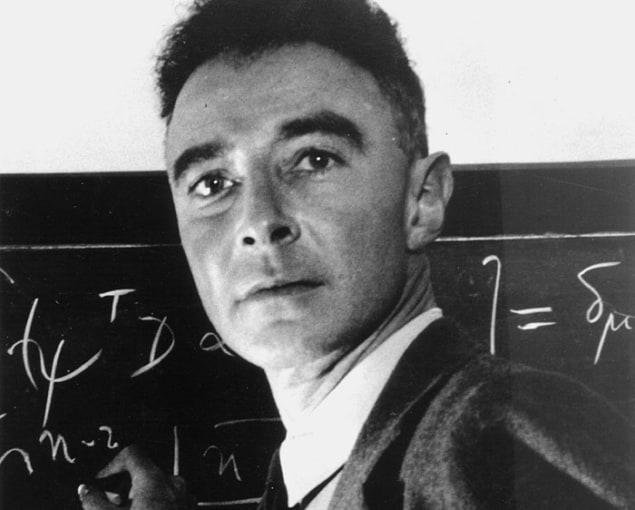In celebrating the 25th anniversary of Physics World this year, we have been able to reflect on the many ways that physics has evolved during the last quarter of a century. We have seen many big breakthroughs, from the discovery of neutrino mass to the realization that the universe is expanding at an accelerating rate and the discovery of the Higgs boson last year. But equally as dramatic have been the changes in the way that we report the latest developments in the physics community. New technologies are giving us exciting opportunities to tell physics stories using more than just the written word, for example through videos, podcasts and social media. Here is a selection of our audio and visual highlights from the past year, which has certainly been another colourful 12 months for physics
Building the perfect lens with metamaterials
In October we published a special anniversary issue of Physics World, which is still available as a free PDF download. The issue features our pick of the five technologies that are emerging from physics research that have the potential to make significant impacts on people’s lives around the world. Linked to this article, we also produced a series of short films in which we visited the research centres in the UK that are developing some of these technologies. In this film we visit Imperial College London to explore the idea of creating a “perfect lens” using artificial structures known as metamaterials. Such a device could reveal natural structures that are tantalizingly beyond the reach of today’s microscopes and that could revolutionize nanotechnology and the biosciences. If you enjoy this, then you might also like to watch the other two films in this series about quantum computing and graphene’s potential to provide drinking water.
Quantum computing: challenges, triumphs and applications

Quantum computing is one field of research that has the potentially to truly transform a technology. Such machines, which would exploit superposition, entanglement and other quantum phenomena to perform super-fast calculations, could make today’s best computers look like basic toys. In March we released this podcast in which physicsworld.com editor Hamish Johnston meets various members of the quantum-computing community to talk about their approaches to developing this technology. Most researchers in the field agree that quantum computing has great potential but that big challenges still remain before we can produce practical devices on a commercial scale. In the podcast, Hamish does meet one man, co-founder of Canada’s D-Wave Systems Geordie Rose, who controversially claims to have already built – and sold – quantum processors.
Sleepless nights at the synchrotron
Scientists throughout the ages have been known to work exceedingly long hours in pursuit of breakthroughs. No writer has captured the essence of this better than the inventor Thomas Edison with his famous saying “Genius is one per cent inspiration and 99 per cent perspiration.” The most passionate researchers of today are no different and in September we released this short film about the experiences of the scientists who travel to the European Synchrotron Radiation Facility (ESRF) in Grenoble, France, to use its intense X-ray beams for imaging experiments. For researchers, this experience can be both exhilarating and stressful, as they often face a race against the clock to get their results within the short amount of time that has been allocated to them by the facility. This short film focuses on two research groups that are both interested in recreating the high-pressure environments reminiscent of the ocean floor and the Earth’s interior. In both senses of the word, the pressure is on for these scientists.
The enigmatic life of J Robert Oppenheimer

Science writing – when done effectively – involves an awful lot of passion combined with hard graft. This was certainly the case for the philosopher Ray Monk, who spent 11 years working on his new biography of J Robert Oppenheimer, entitled Inside the Centre. In June Margaret Harris, reviews editor of Physics World, produced a podcast featuring an interview with Monk about the themes raised in his new book. Monk talks about the enigmatic life of Oppenheimer, who was one of the key figures in the Manhattan Project but who later ran into trouble with the US government for his socialist leanings. Monk also discusses the efforts he made to get to grips with Oppenheimer’s physics, including the latter’s theoretical work on mesons and the gravitational collapse of neutron stars.
And finally…
In October we had the honour of hosting a public lecture presented by Andre Geim, who shared the 2010 Nobel Prize for Physics with Konstantin Novoselov for their discovery of graphene and their subsequent studies of this one-atom-thick form of carbon. At the sell-out event, attended by more than 400–people, the Nobel laureate talked about why he is still so passionate about fundamental research. He told the story of the graphene discovery and discussed some of the exciting applications of the material that are beginning to emerge. The audience was also treated to a description of Geim’s earlier work on levitating frogs, which led to him sharing an Ig Nobel prize in 2000. We recorded the lecture and combined it with Geim’s slides to create this video presentation for you to enjoy.



